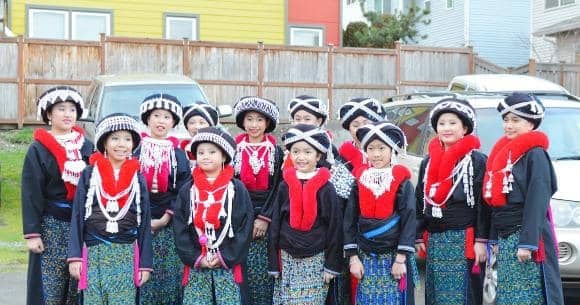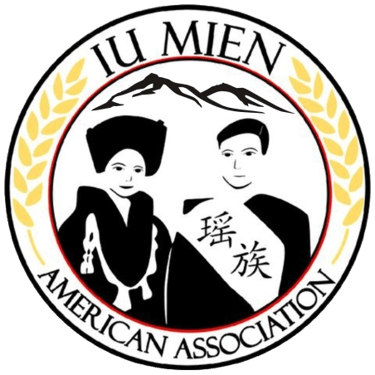History of Iu Mien
Explore the rich history and culture of the IU Mien people, celebrating their traditions, struggles, and contributions to society through this dedicated page.


Young Iu-Mien girls dressed in traditional attire
Who are the Iu-Mien
According to the chanting song story, Iu Mien elders’ oral histories, and a shaman’s worship book written by Iu Mien elders in ancient Chinese characters, the Iu Mien people were the first civilization in China. Their nation was located in what is now Guangdong, Guangxi, and Hunan provinces and was ruled by the Iu Mien king. The last Iu Mien king, King Pan, is remembered through surnames like Saephanh, Saephan, Phanh, Pharn, Pan, and Pham.
About 800 years ago, King Pan and the Chinese emperor declared war over disputed territory. Led by King Pan, the Iu Mien fought to protect their people and land, but they suffered great losses. King Pan lost countless soldiers and civilians, as well as large portions of territory to the Chinese emperor.
Eventually, the Iu Mien were overwhelmed by the emperor's forces. With their soldiers outnumbered and weapons limited, King Pan was forced to negotiate. The Chinese emperor presented two options: surrender and sign a treaty to cede all Iu Mien land, or continue fighting, which would likely result in the complete genocide of the Iu Mien people. King Pan chose to surrender, and they signed a treaty known as the "Passport to Travel in the Hills" or the "Passport to Cross the Mountain."
This treaty, written by the Chinese emperor in Chinese characters, granted the Iu Mien the right to maintain their identity, language, culture, and worship system. They were allowed to live on hillsides and in mountains, cultivating land and raising families. However, the Iu Mien were forbidden from forming their own government or pursuing nationhood. The document also ensured that Iu Mien could legally cross any borders or territories to settle in the mountains, where they could farm without interference from regional governments. Furthermore, the governments in those areas were responsible for their well-being and educating them to follow the laws of the host country.
The Iu Mien have faced conflict throughout their history. Those who remain in Laos today are the descendants of people displaced from China a century earlier. In Laos, they lived in small, mountainous communities of up to 200 people, practicing subsistence farming. Despite their remote lifestyle, they were drawn into conflict during the 1950s by French colonial powers and later during the Vietnam War. During the U.S.’s covert "Secret War" in Laos, the Iu Mien supported the American side, making them targets for retribution when the Pathet Lao communist government took power in 1975.
Escaping Laos was a perilous journey. The Iu Mien walked for days across difficult terrain to reach safety in Thailand, often traveling at night to avoid government soldiers. Families then had to cross the Mekong River to reach refugee camps set up along the border for fleeing Iu Mien, Hmong, and Lahu people. Conditions in the camps were harsh, with inadequate food, poor sanitation, and makeshift housing. Barbed wire fencing enclosed the camps, with armed Thai soldiers ensuring the refugees stayed confined.
From these camps, the Iu Mien began the long process of applying for refugee status, considering their future options. In 1980, the first Iu Mien families arrived in the United States.
